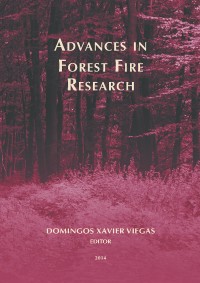Please use this identifier to cite or link to this item:
https://hdl.handle.net/10316.2/34057| Title: | Fire extremes and the triangle of climate, fuels and people | Authors: | Brown, Timothy J. Wall, Tamara U. |
Keywords: | Fire extremes;Large fires;Human factors;Climate;Fuels;Fire behaviour | Issue Date: | 2014 | Publisher: | Imprensa da Universidade de Coimbra | Journal: | http://hdl.handle.net/10316.2/34013 | Abstract: | Over the past decade or so, statements by fire personnel claiming unusual fire behaviour beyond training or experience levels seem to be increasing. This is occurring globally. Concurrently, climate and weather extreme events have been increasing, fuel loads have notably increased due to both natural occurrence and management practices, and the people have been expanding into the wildland and rural interfaces. All of these factors appear to be intersecting causing an increase in "extreme" fire events based on another fire triangle of climate, fuels and people. Megafires (for those comfortable with the term and lack of official definition) could be considered the extreme of the extremes, but many large fires can be categorized as extreme events. But for these extreme events to occur, not all three factors on the triangle need necessarily be extreme simultaneously. For example, strong winds need not be out of the ordinary (e.g., Santa Ana in southern California), but combined with continuous and heavy fuel in a highly populated area can lead to "never seen before" occurrences. Sometimes fire personnel are surprised at how large a fire becomes. In some cases, the extreme event is truly a surprise; in other cases, while seemingly a surprise at the time, upon further reflection perhaps it should not have been. In either event, personnel safety can easily be at higher risk during extreme events, as these situations tax critical thinking given they are outside the common fire experience. This presentation discusses a project that draws upon quantitative assessment of physical observations (e.g., climate, weather, fuels) along with qualitative assessment of firefighter claims to 1) determine if indeed there is a common trend and intersection of these factors; 2) determine if situational awareness factors can be identified to lessen the surprise of these events; and 3) provide recommendations that incorporate knowledge of extreme events into fire management training. | URI: | https://hdl.handle.net/10316.2/34057 | ISBN: | 978-989-26-0884-6 (PDF) | DOI: | 10.14195/978-989-26-0884-6_202 | Rights: | open access |
| Appears in Collections: | Advances in forest fire research |
Files in This Item:
| File | Description | Size | Format | |
|---|---|---|---|---|
| 978-989-26-0884-6_202.pdf | 1.4 MB | Adobe PDF |  |
Items in DSpace are protected by copyright, with all rights reserved, unless otherwise indicated.
